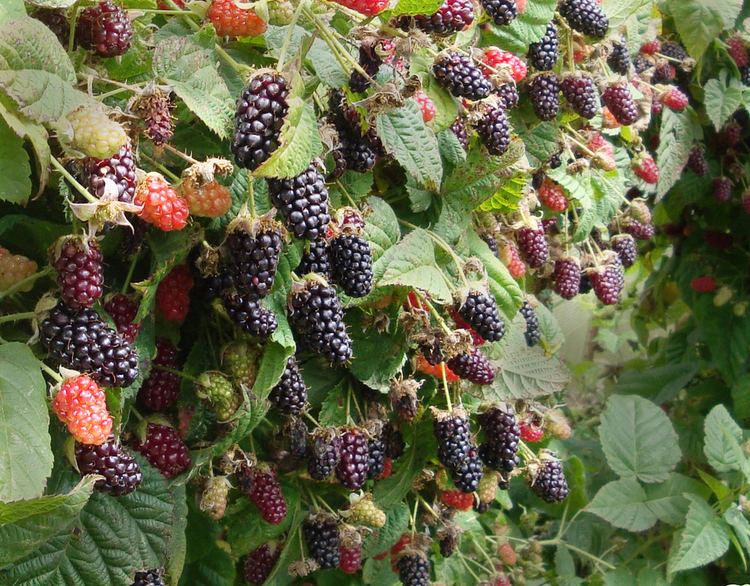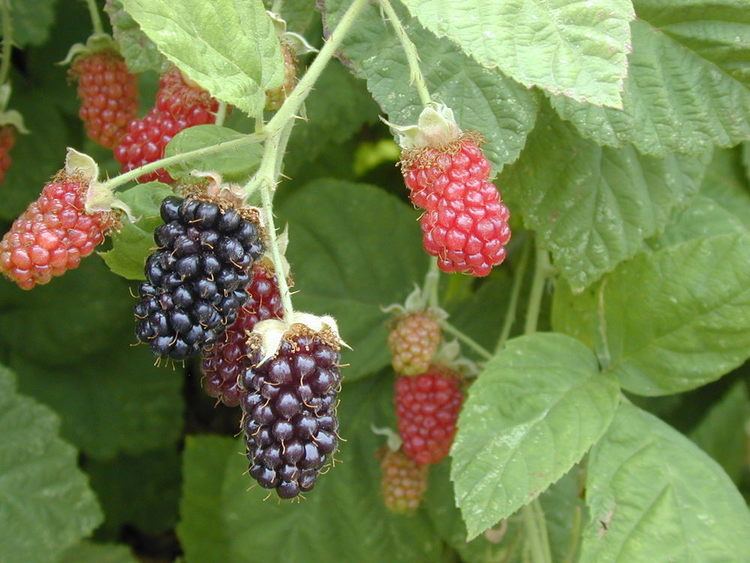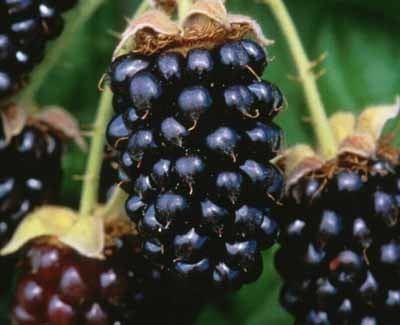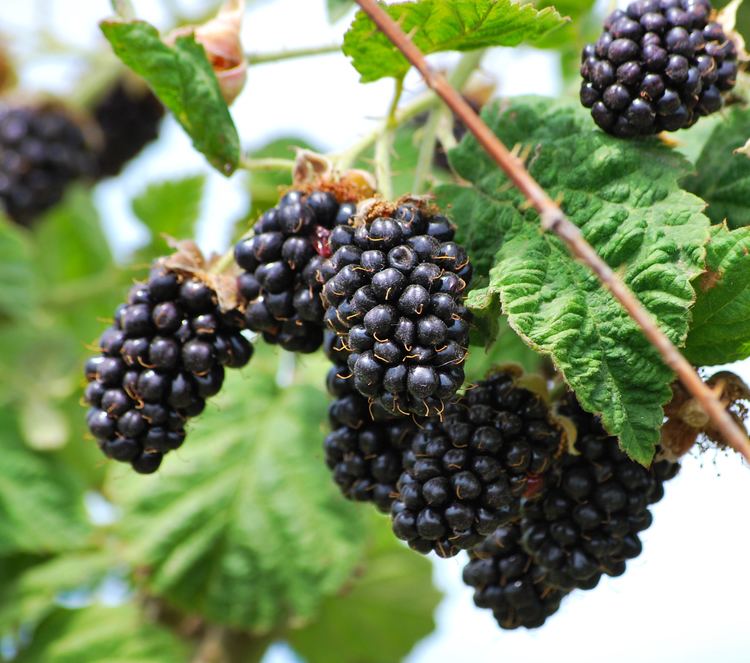Genus Rubus Scientific name Rubus 'Marion' Rank Cultivar | Hybrid parentage 'Chehalem' × 'Olallie' Higher classification Rubus | |
 | ||
Origin Marion County, Oregon, 1956 Similar Boysenberry, Loganberry, Tayberry, Youngberry, Rubus | ||
The 'Marion' cultivar (Rubus L. subgenus Rubus) or Marion blackberry, marketed as marionberry , is an indigenous blackberry developed by the USDA ARS breeding program in cooperation with Oregon State University. It is a cross between the 'Chehalem' and 'Olallie' blackberries. The marionberry is currently the most common blackberry cultivar, accounting for over half of all blackberries produced in Oregon.
Contents

Description and flavor

The marionberry is a vigorously growing trailing vine, usually producing just a few canes up to 20 feet long. The vines have many large spines, and the fruiting laterals are long and strong, producing many berries. The berry is glossy and, as with many blackberries, appears black on the plant, but turns a deep, dark purple when frozen and thawed. It is medium in size and tends to be conical, longer than it is wide. The berry has a somewhat tart flavor, fairly earthy with traces of sweetness. It is larger, sweeter and juicier than the 'Evergreen' blackberry. The relative complexity of its flavor has led to a marketing label as the “Cabernet of Blackberries”. The more powerful flavor of the marionberry has led to it dominating current blackberry production. It is often preferred over other blackberries as an ingredient in pies, ice cream, jellies, jams and other foods.
Development and cultivation

The marionberry was developed by the USDA Agricultural Research Service at Oregon State University in Corvallis, Oregon. It was bred by George F. Waldo, as a mix between the small, flavorful 'Chehalem' berry and the larger, better-producing 'Olallie' berry. Both the 'Chehalem' and 'Olallie' berries are caneberry hybrids, as well. Waldo made the initial cross in 1945, selected it as OSC 928 in 1948 in Corvallis, and tested it in Marion County and elsewhere in the Willamette Valley. The berry was released in 1956 under the name Marion, after the county where it was tested extensively. Oregon produces between 28 million and 33 million pounds annually, with Marion County and Willamette Valley collectively accounting for over 90% of current production. The marionberry's growing conditions are perfectly adapted to the mild, maritime Oregon climate, with its mild rains and warm summers. The berries ripen throughout late spring and early summer. The harvesting season is typically between July 10 and August 10, with a single acre producing up to six tons in a harvest.
Possible state symbol

As of February 2009, the Oregon Legislature has proposed to make the marionberry the official state berry, under House Joint Resolution 11. Although supported by all 90 legislators, the resolution has been delayed by the Oregon Raspberry and Blackberry Commission, as a Washington County farmer named Larry Duyck has objected. Duyck grows the Kotata blackberry, as opposed to the marionberry. He suggests, as the marionberry is already the most produced variety of blackberry, official recognition would boost its sales even more and hurt other varieties. Most legislators have agreed not to press the issue.

